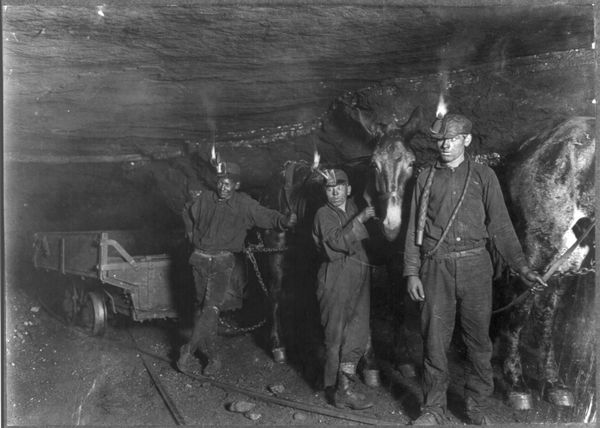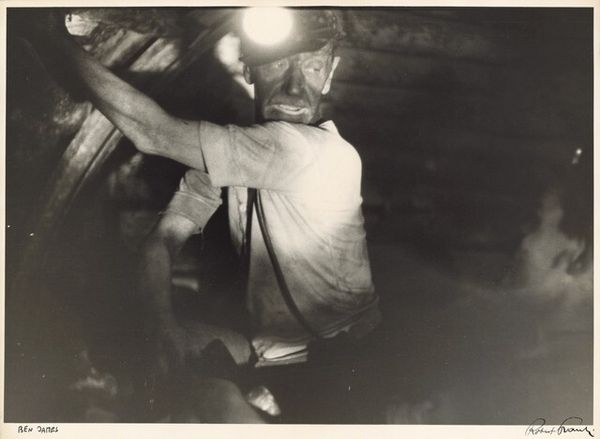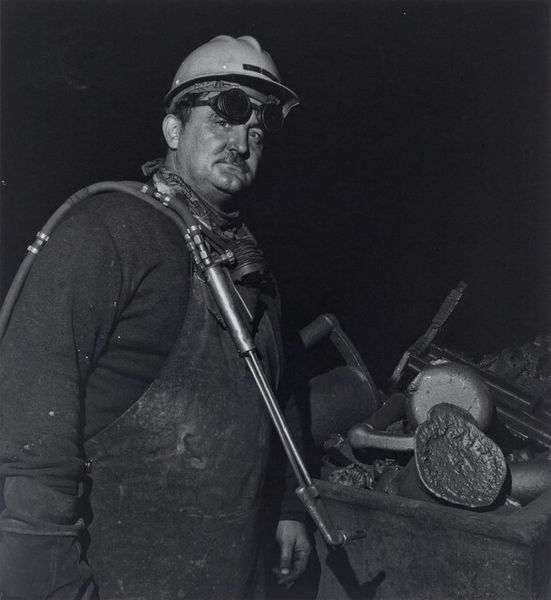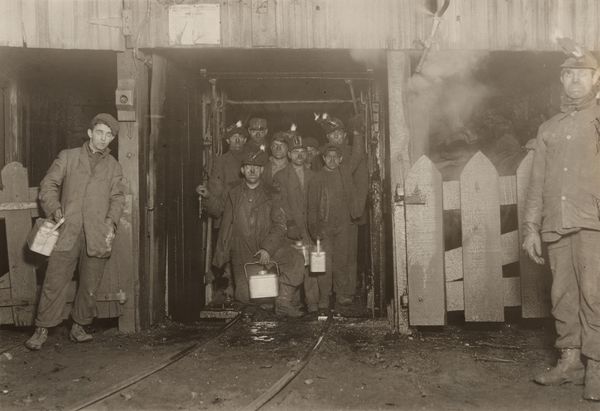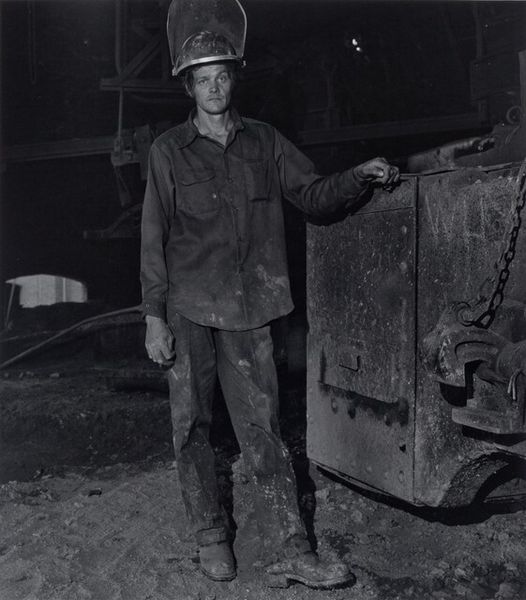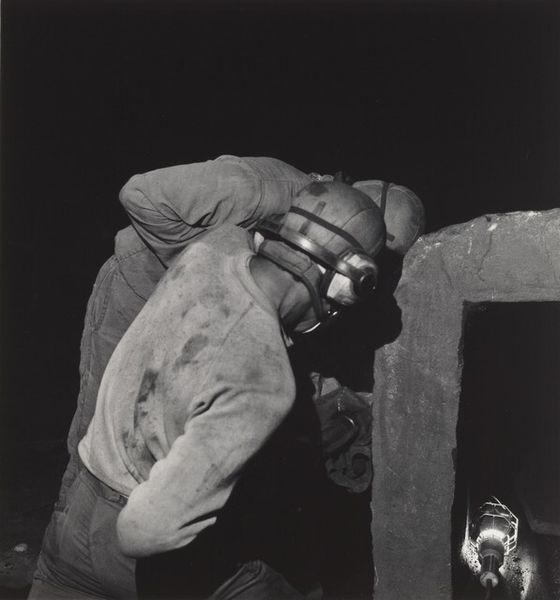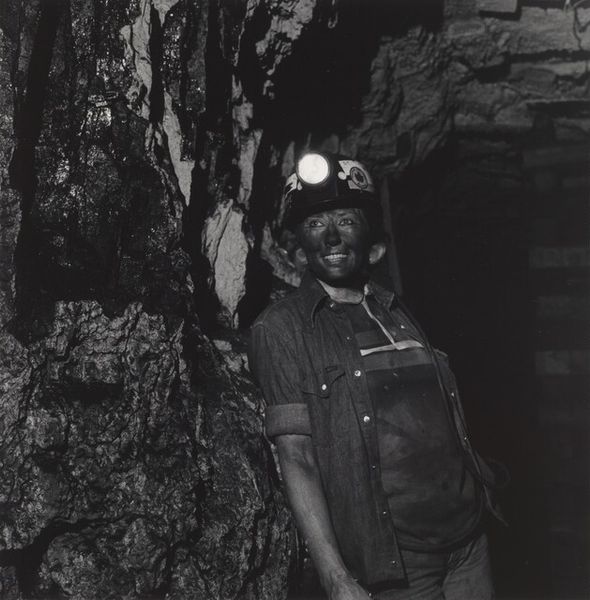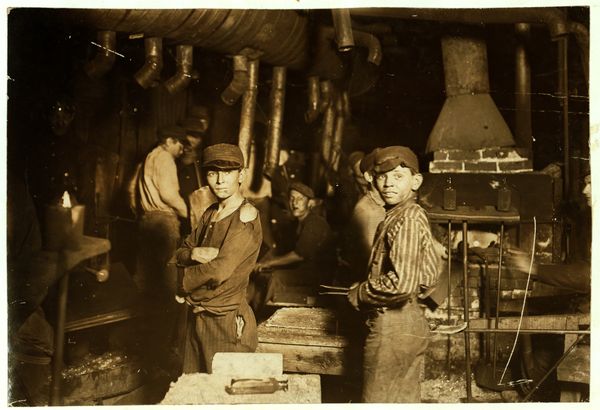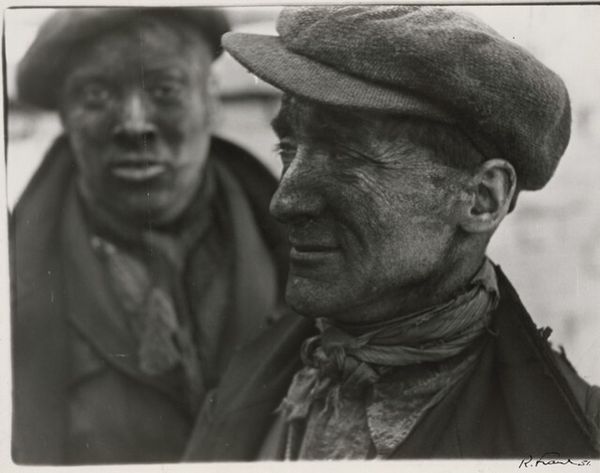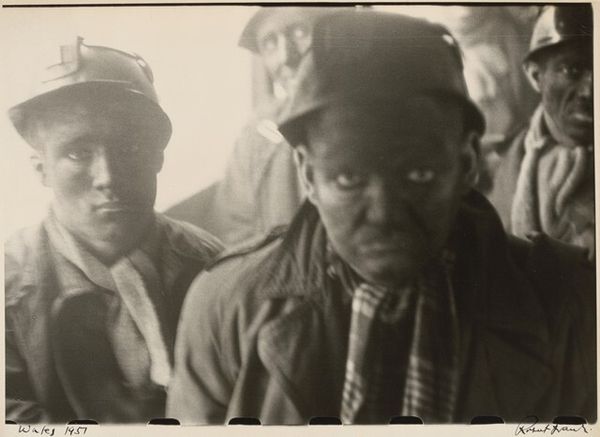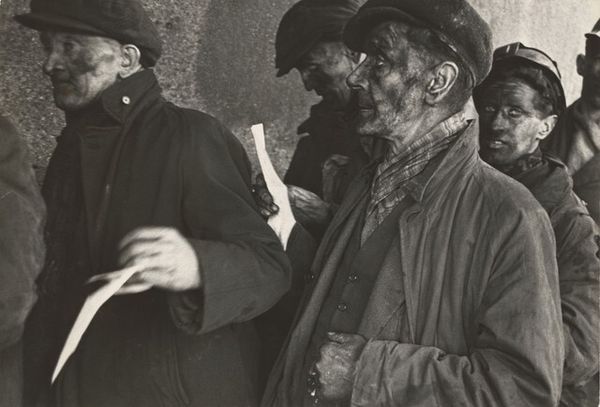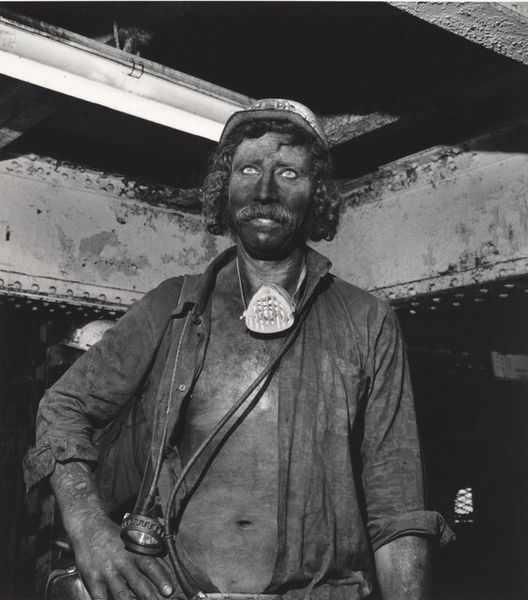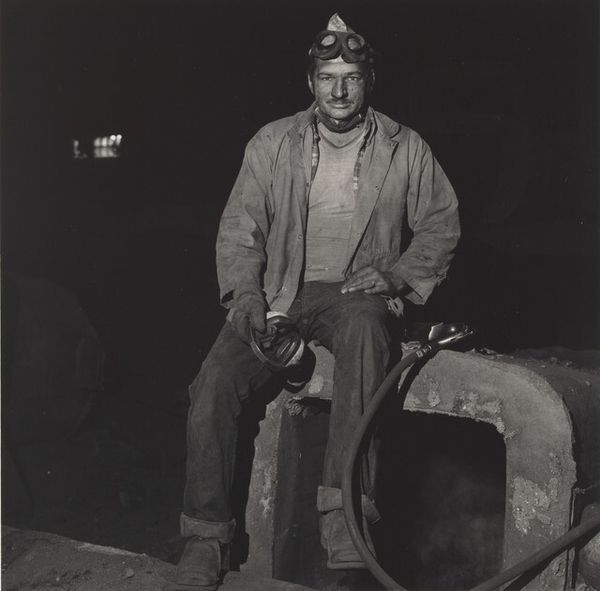
photography, gelatin-silver-print
#
portrait
#
social-realism
#
archive photography
#
photography
#
culture event photography
#
historical photography
#
gelatin-silver-print
#
history-painting
#
realism
Dimensions: image: 25.5 × 34.6 cm (10 1/16 × 13 5/8 in.) sheet: 27.8 × 35.5 cm (10 15/16 × 14 in.)
Copyright: National Gallery of Art: CC0 1.0
Editor: Here we have Robert Frank's "Ben James, Coal Miner," a gelatin silver print from 1953. There's such a stark contrast between light and shadow, and the textures are so tactile, I can almost feel the grit on their skin. What stands out to you when you look at this photograph? Curator: Immediately, I’m drawn to the way Frank’s process highlights the materiality of labor. The starkness isn’t just aesthetic; it’s about the raw, physical realities of coal mining. What is the significance of the contrast of light in representing a commodity like coal, so tied to both necessity and exploitation? Editor: It emphasizes the conditions, almost like a spotlight on their working environment. How do you think the choice of gelatin silver print affects our understanding? Curator: Well, think about the gelatin silver process itself. It's a relatively inexpensive and reproducible method, connecting the image to broader social and economic structures of photography, documentary and even artistic interpretation. In addition, photography's inherent link to documentation grounds it within the material realities of mid-20th century Welsh labor, shifting from a simple portrait to an art object loaded with layers of social critique and tangible exploitation. Editor: So the process underscores the value, or perhaps devaluation, of labor in society. Curator: Precisely! It raises questions about how we consume images and how that consumption is intertwined with our consumption of commodities produced by laborers like these miners. Also, how does our gaze influence its production and its distribution? Editor: This makes me think about the act of observing these workers, and whether photography like this changes anything for them in practice. Curator: Indeed. It challenges us to reflect on the cycle of labor, representation, and consumption and consider where art stands in it all. Editor: Thanks. It is thought-provoking. It gives me new perspectives on social practice.
Comments
No comments
Be the first to comment and join the conversation on the ultimate creative platform.
